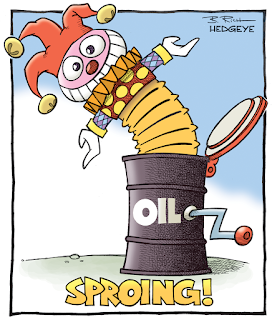OPEC ministers meet in Vienna tomorrow. Expectations could hardly be lower. Attempts to agree on an output freeze were stymied by the Saudi’s insistence that is rival Iran participates as well. Iran cannot agree to limit its production yet, or it would have sacrificed (or postponed) it nuclear program for nought.

Many observers have announced the death of OPEC. The Saudi’s refusal in 2014 to continue to act as the swing producer, coupled with the rise of non-OPEC production, especially the US shale producers, drove oil prices lower, while world demand had softened.
Leaving aside some possible strategic errors, like allowing the price of oil to stay elevated for so long created space for higher cost producers, we have argued that the Saudi strategy, far from being a capitulation, is at its heart, a rational strategy for an oligopoly or cartel. This requires a potentially painful process of driving the price of oil down and forcing inefficient producers out. Due to the costs of shale production, and the debt incurred, US shale producers have been squeezed. This has resulted in a drop in output approaching 500k barrels a day. This is around a quarter of the excess global production.
The Saudi tactics have been aided by the sharp fall in Nigerian output and the loss of some Libyan output due to conflicts. These conflicts may have reduced global output by another 750k-1 mln barrels a day. This has helped restore better balance between supply and demand. This is what appears to account for the run-up in oil prices toward $50 a barrel recently.
The July light sweet futures contract is extending its declining streak into a fourth session today. It has fallen in eight of the past 10 sessions. However, despite the closing direction, prices have been moving broadly sideways. The pullback has been modest since the $50 level was seen briefly in late-May.
A trendline connecting the April 5 (~$37.50), April 18 (~$39.80) and May 10 (~$43.65) come in a little below $47 today and near $47.40 at the end of the week. At the end of June, it is near $51.90. A lower trendline, drawn off the July contract low on January 20 (~$31.60) and February 11 ($33.15) and April 5 (~$37.50) is not particularly relevant now, but it is found a little above $44 at the end of June.











Leave A Comment